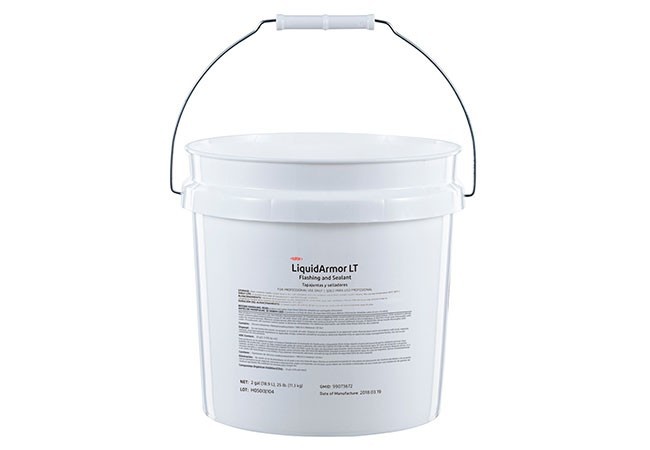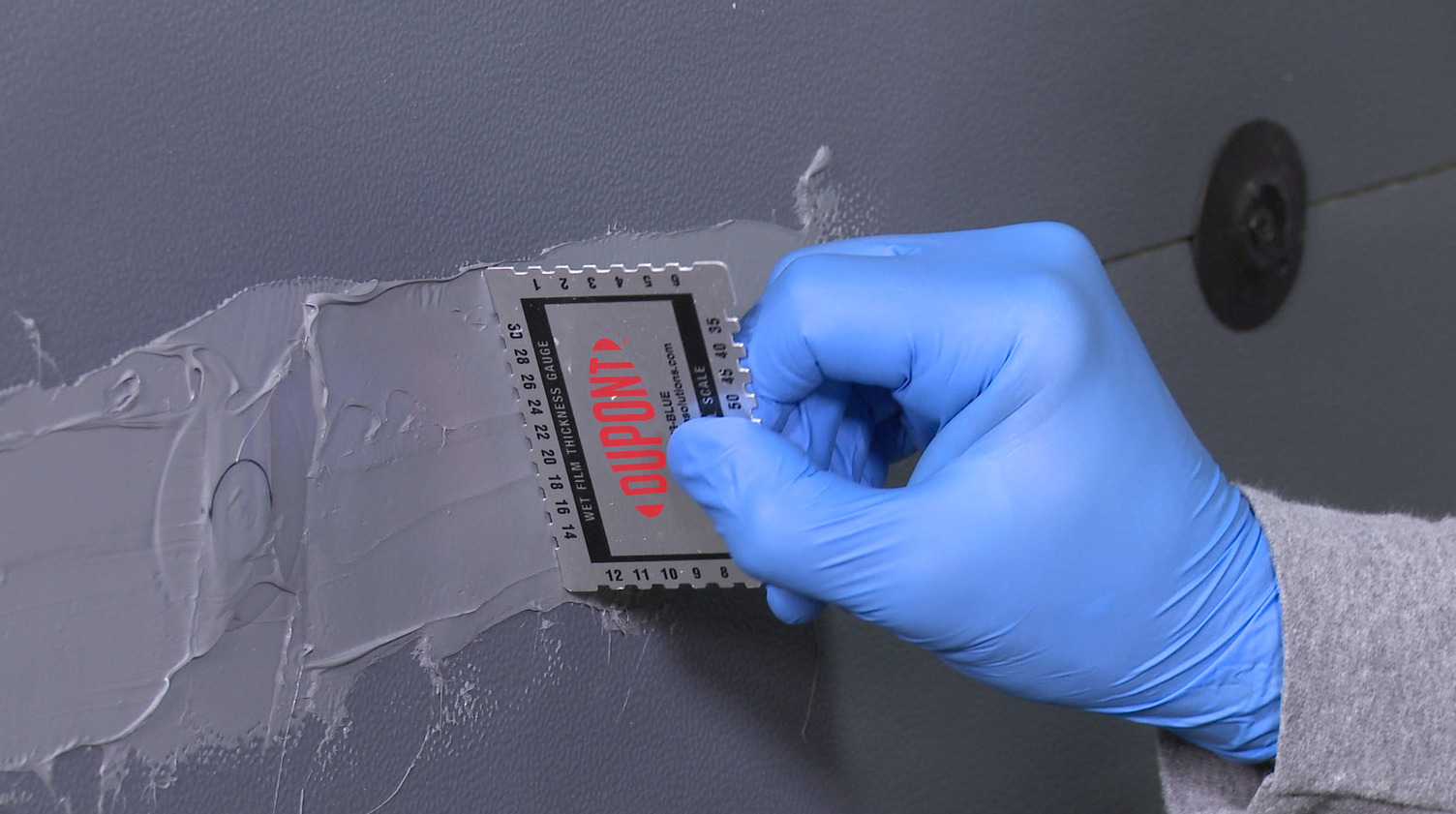DuPont™ LiquidArmor™ LT Flashing and Sealant
Advanced Flashing Solution for Low-Temperature Commercial Applications


DuPont™ LiquidArmor™ LT Flashing and Sealant
Advanced Flashing Solution for Low-Temperature Commercial Applications
<br /><b>DuPont™ LiquidArmor™ LT Flashing and Sealant</b> is a durable, flexible, single-component silicone flashing alternative suitable for low-temperature applications, designed to provide commercial buildings with advanced moisture and air sealing protection. It forms tight and seamless barriers along the rough openings of windows and doors as well as insulation board joints. Compatible with DuPont™ Commercial Wall Systems and foam insulation products, LiquidArmor™ LT is formulated as a cold weather alternative to LiquidArmor™ QS, allowing application as low as -20 °F (-29 °C).
<br /><br />
<b>LiquidArmor™ LT</b> features a long tooling time to facilitate workflow of prepping a whole window opening and is designed to have high abrasion resistance and durability during the window and door installation process. It seals gaps up to 6mm (1/4 in.) wide and offers a reliable replacement to peel and stick flashing tapes as well as liquid flashing products that require a mesh.
<br /><br />
<b>LiquidArmor™ LT</b> is trowel-applied after either dispensing from a sausage gun or directly from a pail. It works on a wide range of surfaces without primer, including foam boards, steel studs, fiberglass-faced gypsum board and concrete masonry units. The moisture-cured, fluid flashing solution seals around screws and veneer anchors, resulting in a durable and resilient barrier suited to withstand jobsite variations. Once LiquidArmor™ LT is applied at board joints and penetrations, it forms part of a continuous air and moisture barrier per DuPont’s commercial wall systems.
Features & Benefits
Specifications
Standard Sizes
| Unit | Unit Size | Units per Case | Cases per Pallet | Units per Pallet |
|---|---|---|---|---|
| Pail | 2 Gallons* | - | - | 60 |
| Sausage | 20 oz | 16 | 48 | 768 |
Note: *The 2-gallon pail of LiquidArmor™ LT Flashing and Sealant is packaged by weight, with a net weight of 25 lbs(11.3kg).
Testing
<b>LiquidArmor™ LT Flashing and Sealant</b> exhibits physical properties as indicated in the tables below when tested as represented. Review all instructions and (Material) Safety Data Sheet ((M)SDS) before use. Please contact DuPont at 1-833-338-7668 when additional guidance is required for writing specifications that include this product.
| TEST METHOD | TEST TITLE | PROPERTY | RESULTS |
|---|---|---|---|
| STRENGTH | |||
| ASTM D412 | Standard Test Methods for Vulcanized Rubber and Thermoplastic Elastomers—Tension | Tensile Strength | 1450 (210) kPa (psi) |
| ASTM D412 | Standard Test Methods for Vulcanized Rubber and Thermoplastic Elastomers—Tension | Elongation at Break | 2.7 |
| WATER | |||
| ASTM E96 | Standard Test Methods for Gravimetric Determination of Water Vapor Transmission Rate of Materials | Water Vapor Transmission Method B | 180 (3.1) ng/Pa-s-m2 (perm) @ ~28 dry mils |
| ADHESION | |||
| ASTM D4541 | Standard Test Method for Pull-Off Strength of Coatings Using Portable Adhesion Testers | Pull Adhesion to Thermax™, Gypsum-Based Sheathing, Plywood, OSB, metals | >110 (>16) kPa (psi) |
| GENERAL | |||
| ASTM C661 | Standard Test Method for Indentation Hardness of Elastomeric-Type Sealants by Means of a Durometer | Durometer Hardness, Shore A | 40 |

